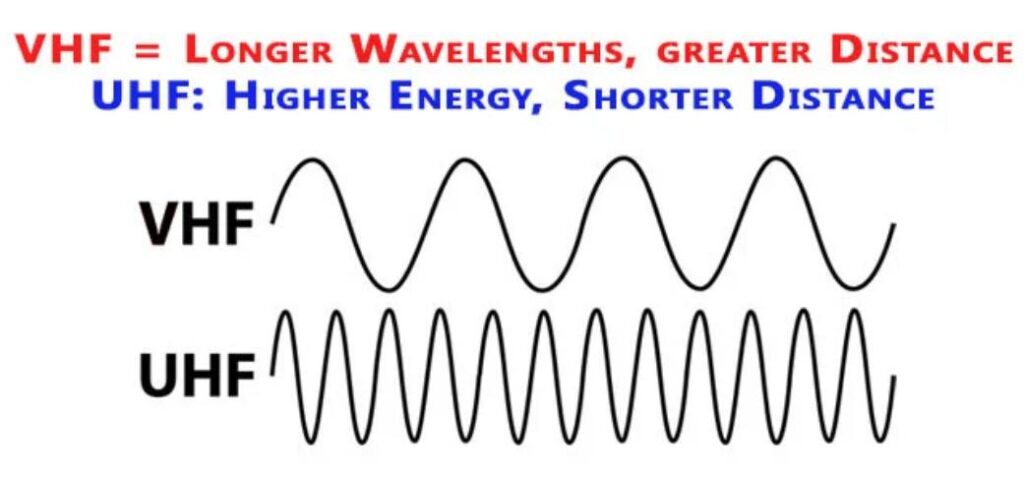What’s the Difference Between VHF and UHF Two-Way Radios?

UHF or VHF? This week’s Two-Way Radio Tip will examine just exactly what are these radio frequencies, and how they affect the performance of two-way radio communication.
Professional quality two-way radios are an important investment for any business in any industry. Still, knowing what type of professional radio will work best can be a little intimidating for someone who is purchasing radios for the first time. Whether you need a set of four radios for your janitorial staff or 40 for your distribution center, knowing what radio will perform the best while not breaking your budget can be one of the most important equipment decisions you ever make. One of the first areas to consider when choosing the right two-way radio for your industry and situation is knowing what frequencies will provide the best performance for your environment. So, to figure this out, you need to know a little bit more about radio frequencies.
Understanding Radio Frequencies
Did you know that radio frequency waves travel at the speed of light? That’s why radio waves aren’t measured by their speed, but instead they are measured by their oscillation patterns or “waves”. A wavelength is the distance between the tops of two sound waves; the number of waves that pass a certain point for 1 second is called the “frequency”. Measuring radio waves is therefore measured in Hertz and is denoted by the “Hz” abbreviation. One Hertz is equal to one cycle per one second. So, a kilohertz (kHz), is equal to 1000 cycles per second, and a megahertz (MHz), is equal to 1,000,000 cycles per second, or 1000 kHz.
Now why is this information important when discussing UHF and VHF radio frequencies? Simple. Both UHF and VHF have different frequency patterns, and therefore different transmission performance characteristics. Understanding the difference between the two will be incredibly helpful when selecting the correct two-way radio frequency.
Very High Frequency (VHF)
Very High Frequency (VHF) range is from 30 MHz to 300 MHz. The VHF wavelength is almost 10 times longer and more malleable than that of the UHF frequency. This means that the VHF wavelength is harder to disrupt and therefore able to move around solid objects like people, rocks, and canyons. This wavelength pattern also means it can travel further when nothing is disrupting its oscillating pattern. It shouldn’t be surprising to learn that VHF is exclusively used for the maritime and aviation industries. That’s why any wide-open location that has a clear line-of-sight like in an open field, golf course, or outdoor security detail, will perform better using the VHF band they will be able to transmit much further.
However, one of the downsides of using VHF two-way radios is that they have a smaller number of available frequencies. Therefore, you might have to compete other transmitting devices like wireless microphones, cordless telephones, and even television and radio channels. Another challenge for VHF two-way radios is that they do not travel well when there are obstacles like buildings or heavily forested areas.
Ultra-High Frequency (UHF)
Professional level UHF two-way radios have a frequency range between 400-512 MHz. These UHF radio waves are much shorter in length and pulsate with much more intensity than VHF. As a result, UHF will not travel as far in the outdoors. However, UHF radios are generally better for indoor use because their shorter and more rapid wavelengths can penetrate physical obstacles like steel and concrete. UHF radios work great for where areas of interference exist like those found in buildings, thickly wooded or hilly areas, and urban outdoor settings.
Another advantage to UHF frequencies is that there is less chance of cross frequency interference with your signal because there is not as much traffic on UHF channels as there is using VHF.
In most cases, we recommend using UHF radios for the best overall coverage. For more information on how to select the right two-way radio system for your industry or professional use, please contact us.